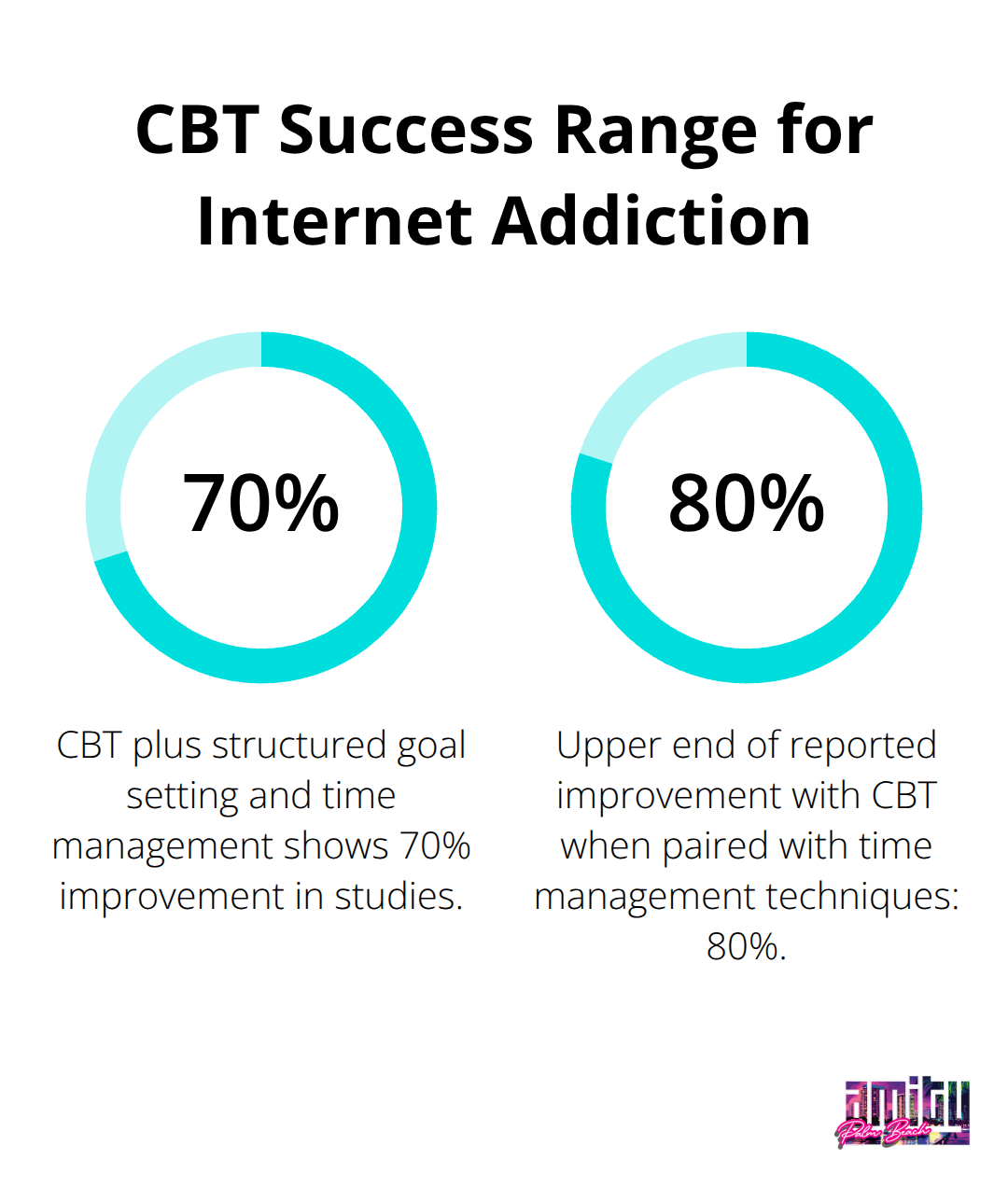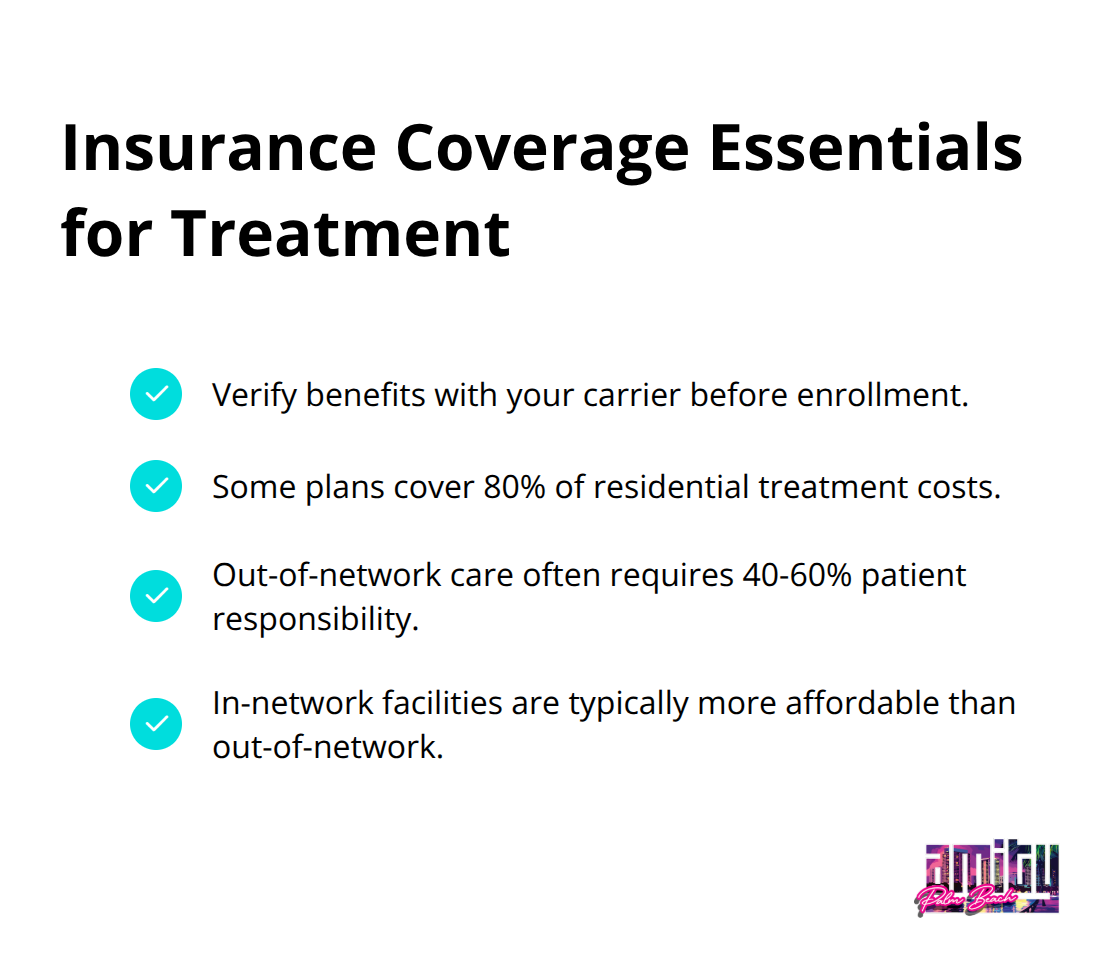Internet addiction affects millions of people worldwide, disrupting work, relationships, and daily functioning. Finding the right internet addiction recovery program can feel overwhelming with so many treatment options available.
We at Amity Palm Beach understand that choosing effective treatment requires careful evaluation of multiple factors. The right program combines evidence-based approaches with personalized care to support lasting recovery.
What Does Internet Addiction Look Like
Internet addiction shows specific behavioral patterns that disrupt daily life. The American Psychological Association recognizes symptoms including preoccupation with online activities, withdrawal symptoms when offline, and increasing tolerance that requires more internet time for satisfaction. Studies show that excessive internet use creates a bi-directional link between internet addiction and depression, partially mediated by anxiety and stress. Physical symptoms include sleep deprivation and carpal tunnel syndrome, while psychological signs involve social isolation, neglected responsibilities, and compulsive online behavior despite negative consequences.
Residential vs Outpatient Treatment Approaches
Residential programs provide 24/7 supervised care in controlled environments, typically lasting 30-90 days. These programs work best for severe cases with multiple failed recovery attempts or co-occurring mental health disorders. The United States established its first inpatient internet addiction treatment program in 2013 (recognizing the need for intensive intervention). Outpatient programs offer 10-20 hours of weekly therapy while patients maintain work and family responsibilities. Research shows cognitive-behavioral therapy effectiveness increases when combined with structured goal setting and time management techniques.
Evidence-Based Treatment Methods Available
Cognitive Behavioral Therapy remains the gold standard for internet addiction treatment. This approach helps individuals restructure negative thought patterns and develop healthy coping mechanisms. Kimberly Young’s Internet Addiction Test serves as the primary screening tool, with each item rated on a 5-point scale ranging from 0 to 5, with a maximum score of 100 points. Motivational Enhancement Therapy addresses ambivalence toward technology use and encourages personal goal setting. Treatment effectiveness improves when programs address underlying psychiatric conditions, as individuals with internet addiction often present with comorbid disorders including ADHD, depression, and anxiety (making comprehensive assessment essential).
Program Structure and Duration Options
Treatment programs vary significantly in structure and time commitment. Intensive outpatient programs typically run 3-5 days per week for 3-4 hours per session. Partial hospitalization programs offer more comprehensive daily support while allowing patients to return home each evening. Short-term residential programs last 30-60 days, while extended care options can continue for 90 days or longer.

The choice between these options depends on addiction severity, support system strength, and individual circumstances that affect recovery success.
These treatment options form the foundation for recovery, but selecting the right program requires careful evaluation of specific factors that determine long-term success.
What Makes a Recovery Program Actually Work
The treatment methodology determines recovery success more than any other factor. Cognitive Behavioral Therapy shows the highest success rates for internet addiction, with studies demonstrating 70-80% improvement when combined with structured goal setting and time management techniques. Programs that use Motivational Enhancement Therapy help overcome the ambivalence that keeps many internet addicts from committing to change.

Staff Expertise Drives Treatment Outcomes
Staff expertise matters significantly – therapists who specialize in technology addictions understand the unique neurological pathways involved, unlike generalist addiction counselors. Look for programs where clinicians have specific training in digital wellness and behavioral addictions, not just traditional substance abuse backgrounds. Licensed professionals with technology addiction certifications provide more targeted interventions than general addiction specialists (who may lack understanding of digital dependency patterns).
Program Flexibility Determines Long-Term Success
Duration flexibility separates effective programs from rigid approaches that fail many participants. The most successful programs adapt length based on individual progress rather than predetermined timelines. Intensive outpatient programs that run 3-5 days weekly for 3-4 hours work best for mild to moderate cases, while severe internet addiction requires 30-90 day residential treatment.
Multi-Level Treatment Approaches Show Superior Results
Programs that offer multiple transition levels – from residential to partial hospitalization to outpatient – show higher retention rates than single-level approaches. The best programs customize schedules around work and family obligations while they maintain therapeutic intensity needed for neuroplastic changes in the brain. Personalized treatment protocols provide comprehensive guidance for evaluating program structures (helping families navigate complex treatment options).
These program characteristics form the foundation for effective treatment, but quality indicators and success metrics reveal which programs deliver measurable results.
How Do You Spot Quality Treatment Programs
Accreditation separates legitimate programs from questionable operations that lack oversight. The Joint Commission sets rigorous standards and certification requirements that healthcare organizations must meet to achieve accreditation, while CARF International accreditation specifically validates behavioral health programs. State requirements vary dramatically – Florida requires 40 hours of annual education for addiction counselors, while some states require only 20 hours. Programs without proper credentials operate in legal gray areas that put patients at risk.
Success Metrics Reveal Real Program Effectiveness
Most programs advertise completion rates, but these numbers mislead without context. The meaningful metric is 12-month sobriety rates measured from treatment completion, not enrollment. Research suggests that people who received planned long-term treatment had a 23.9% greater chance of abstaining or consuming less. Programs that refuse to share outcome data typically underperform industry standards.
Look for facilities that track clients through independent third-party follow-up surveys rather than self-reported success stories. The National Survey on Drug Use and Health shows that comprehensive treatment approaches achieve higher long-term success rates than single-modality programs. Programs that display transparent outcome statistics demonstrate confidence in their methods, while vague testimonials indicate poor systems.
Quality facilities participate in outcome research studies and publish peer-reviewed results that validate their treatment effectiveness. For comprehensive addiction treatment guidance, this resource provides detailed program evaluation frameworks that help families make informed decisions about treatment options.
Insurance Coverage Determines Treatment Accessibility
Most major insurance plans cover internet addiction treatment under mental health parity laws, but coverage varies significantly between carriers. Verify specific benefits before enrollment – some plans cover 80% of residential treatment costs while others limit coverage to outpatient services only. Out-of-network providers typically require 40-60% patient responsibility, which makes in-network facilities financially preferable.

Programs that accept multiple insurance carriers demonstrate financial stability and regulatory compliance that benefit long-term treatment relationships. Understanding how much rehab centers earn helps families evaluate program sustainability and quality indicators. Contact insurance providers directly to confirm coverage details rather than rely on program estimates alone.
Final Thoughts
The right internet addiction recovery program combines evidence-based treatment methods with personalized care that addresses individual needs. Programs that use Cognitive Behavioral Therapy alongside comprehensive mental health support achieve the highest success rates. Staff expertise matters significantly – therapists who specialize in technology addictions understand digital dependency patterns better than general counselors.
Quality programs maintain transparent outcome statistics and accept multiple insurance carriers to demonstrate financial stability. Accreditation from The Joint Commission or CARF International validates program legitimacy and treatment standards. Insurance coverage varies dramatically between carriers, so families must verify specific benefits before enrollment (rather than rely on program estimates alone).
We at Amity Palm Beach provide evidence-based addiction treatment with personalized approaches that support lasting recovery. Contact qualified programs directly to ask specific questions about their methodology, staff credentials, and success rates. Professional support makes recovery from internet addiction achievable when treatment matches individual circumstances.


